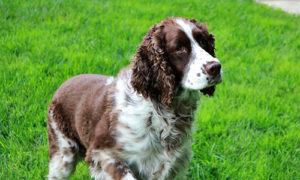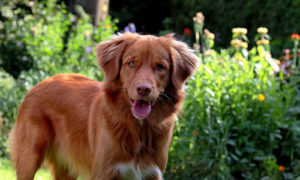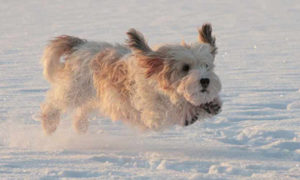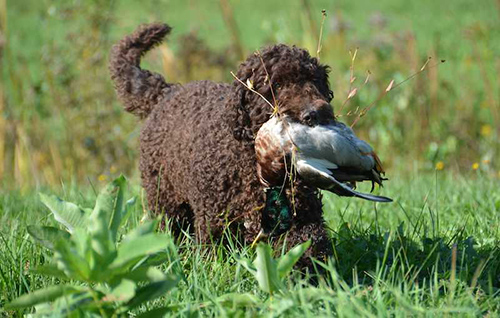
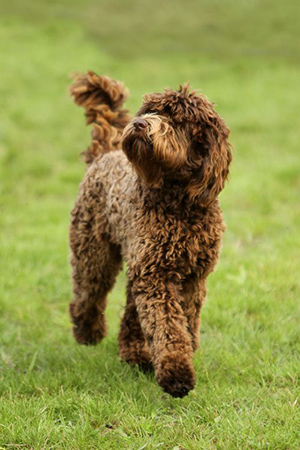
The Barbet is also known as the French Water Dog and has been around in France for centuries; used to hunt waterfowl, this breed is famous for its willingness to work. Breed historians believe that the dog first reached Europe as early as the seventh and eighth centuries, but the first mention of these dogs was in a book from 1387, followed by De Canibus Brittanicus (“Of English Dogges”) in 1570.
Breeders named the dog Barbet, from the French word barbe (beard ) in the sixteenth century. Several breeds, including the Poodle, Bichon Frise, Otterhound, Newfoundland, and the Briard, count the Barbet among its ancestors.
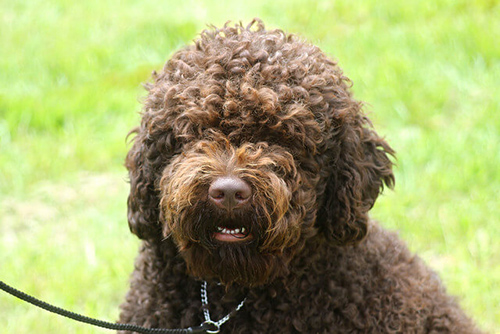
However, the breed never rose to popularity outside of its home country. Its numbers dwindled at the beginning of the twentieth century, becoming nearly extinct after World War I. By the 1940s, only two Barbet breeders existed in France.
One of these breeders’ daughter began efforts to revive the breed around 1970, using descendants of her father’s line. This dog is a medium-sized dog with a slightly rectangular body; the length from their point of shoulder to the buttock’s end is somewhat higher than the height at the withers.
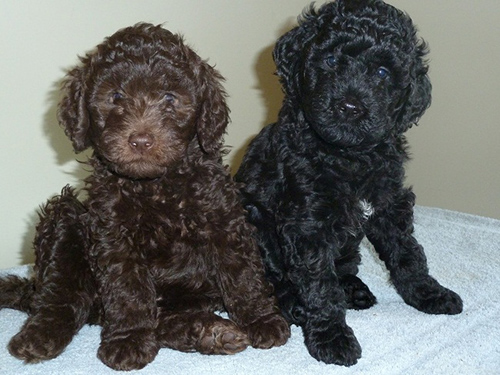
The Chest is well developed, broad, and deep. Its back is solid, and the loin is short as well as strong. These dogs possess a low-set tail with a slight hook at the end, which it carries horizontal when in motion.
The head is broad and rounded, with a well-defined stop. A square muzzle leads into a full nose; the muzzle is slightly shorter than the skull. Its eyes are round and dark brown, and the low-set ears are long, wide, flat, and covered in long hair.
Barbet Breed Facts
Activity level: These dogs are lively and bright, and they enjoy daily activities and jobs to do. This water dog loves to swim, even in cold temperatures. The breed must receive regular physical and mental stimulation to be truly happy.
Size: 19-24 inches; 35-60 pounds, with males generally larger than females
Life expectancy: 10-15 years
Temperament
The Barbet is intelligent, with an even temperament and a peaceful, friendly nature. They’re loyal dogs that love to be near their owners. These dogs can get along well with other dogs and cats if appropriately socialized.
Grooming a Barbet
You can keep the coat in a natural state and looking neat with some trimming and thinning. If left to grow too long, the coat will mat or cord. The hair on the ears and the breed’s trademark beard should be left longer. Check and clean around the Barbet’s eyes daily. As with all water dogs, their ears should be cleaned and dry. Check inside the ears frequently; some wax is OK, but the ears should not have an unpleasant odor.

Coat: This French Water Dog has a thick and curly layer, ranging from waves to tight curls, and designed to protect the dog from the elements. The coat forms a beard, or barbe, on the dog’s chin, and the coat on the skull falls onto the bridge of the dog’s nose.
Color: Solid black, brown, fawn, and gray, with or without black markings, and solid white.
Barbet Buyer’s Guide and Breeder Advice
Never buy on impulse, and think through the decision to get a Barbet. Remember, the breed needs both mental and physical exercise. They are bright dogs and need to be treated as such.
Parent club: Barbet Club of America; founded in 2009

